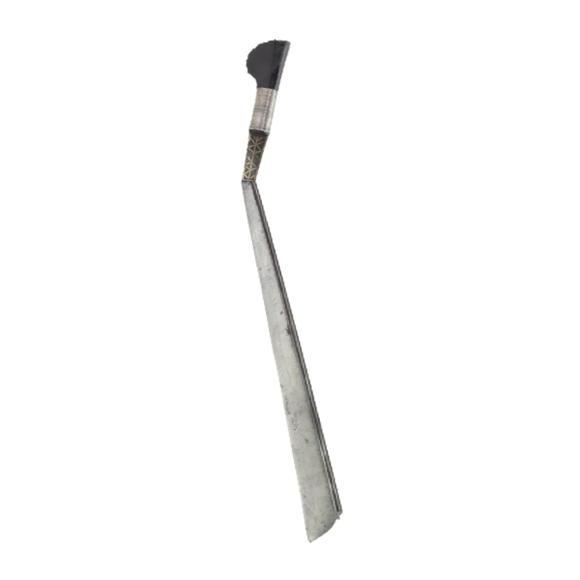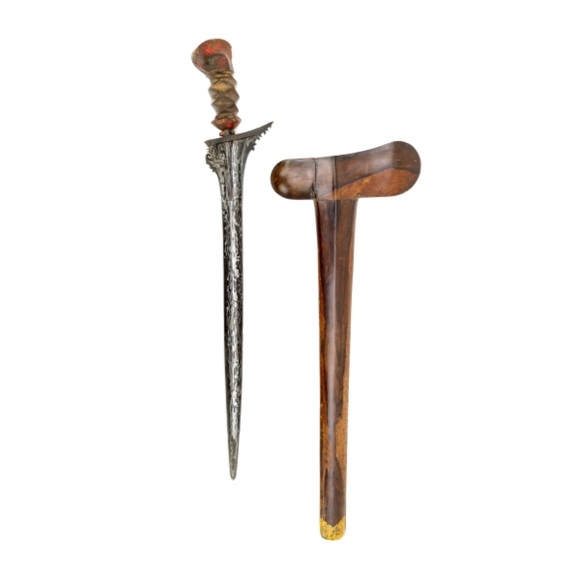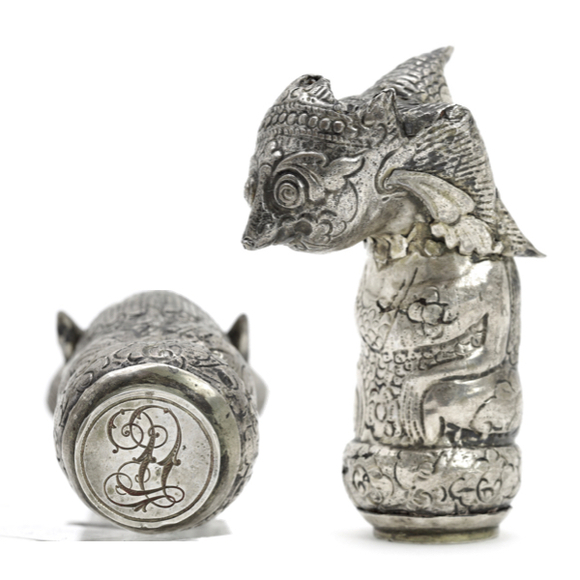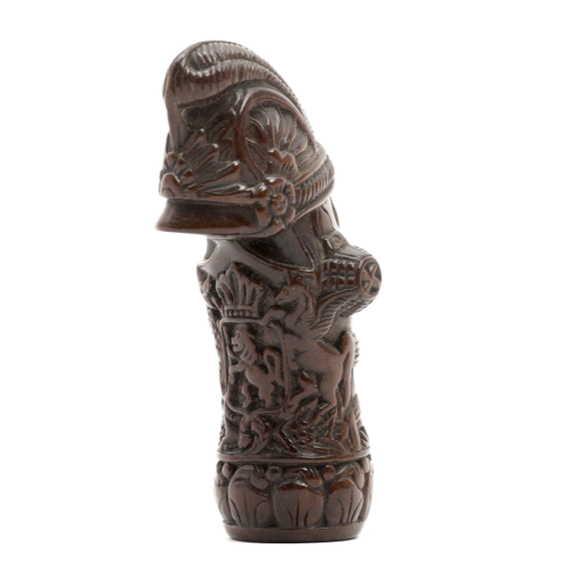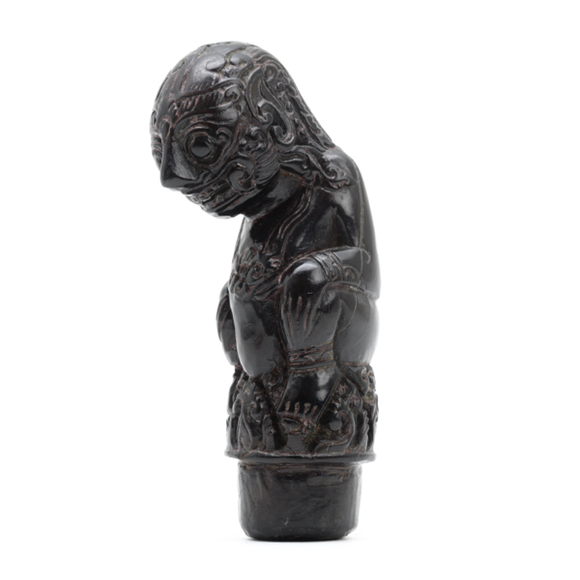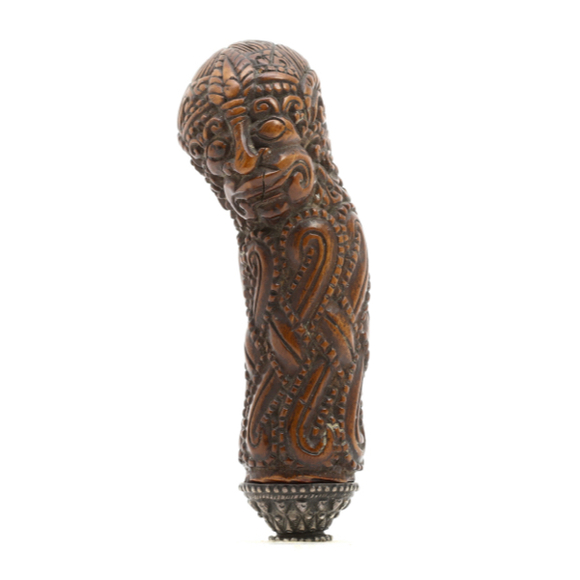A curious slashing weapon from northern Borneo.

Sheathed 49.8 cm
Keris 44.3 cm
37.5 cm
Iron, wood, silver, resin
Songkhla, Southern Thailand
18th to early 19th century
Jacques Lebrat, Paris
Private collector, the Netherlands
Introduction
The keris coteng is the predecessor of the keris tajong, the so-called "kingfisher keris". Coteng comes from the word cotok, which means beak, referring to its long straight beak. Most of them appear to be quite early, no later than the early 19th century and perhaps well into the 18th century. They were produced mainly in Pattani and Songkhla on the Malay Peninsula.1
Notes
1. Karsten Sejr Jensen: Krisdisk. Chapter 10.
This example
The 9 luk blade of Pattani pandai saras type with raised central rib. It is forged in a straight grain pattern with no sharp contrast between the layers, which is a typical feature of keris from this area.
The coteng hilt is made of thick silver, with piercing eyes and a tense look. The nose is long and straightish. The hilt is finely chiseled and engraved and especially the curly hair at the back is very nicely done.
The wooden scabbard is typical for this type, with sharp ends on the gambar that curl inwards. The sheath is reinforced with silver mounts in a very mainland Southeast Asian style.
This type of keris is attributable to Songkhla in Southern Thailand and probably dates from the 18th to early 19th century.1
Notes
1. Karsten Sejr Jensen: Krisdisk. Chapter 10. For a very similar hilt, see fig 204a.
Conclusion
A textbook example of this rare and early type of keris, with all parts being very representative of its type. It comes with a custom stand for upright presentation.


















A Madurese keris hilt, carved from dark hardwood in the form of a Dutch cuirassier.

